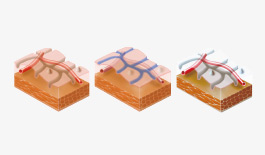
Latest News-LGI
Scientific Publications
Bowman et al, 2015
High Definition Colonoscopy Combined with i-SCAN Imaging Technology Is Superior in the Detection of Adenomas and Advanced Lesions Compared to High Definition Colonoscopy Alone. Diagn Ther Endosc. 2015;2015:167406. doi: 10.1155/2015/167406. Epub 2015 Jun 18.

Crohn`s disease ileum
Aphthoid ulcers of the terminal ileum are a typical finding in Crohn’s disease. As seen in this video, contrast and tone enhancement makes even subtle changes easier to spot.
Courtesy of Dr. Michael Häfner, St. Elisabeth Krakenhaus, Austria

Laterally spreading tumour
In this patient with a laterally spreading tumour granular type i-scan was used to get a clear idea about the polyps pit pattern. As a pit pattern type IV was found, indicating a benign lesion, we proceeded to resect the lesion by means of endoscopic mucosal resection.
Courtesy of Dr. Michael Häfner, St. Elisabeth Krakenhaus, Austria

Radiation Proctopathy (RP)
RP is a chronic condition that has a significant burden on patients quality of life and healthcare. This clip shows how i-scan 2 helps to highlight the vascular lesions in detail in a patient with symptomatic bleeding and allows targeted YAG laser treatment to the lesions. The vascular areas are not prominent on HD WLE or even i-scan 1 but by switching to i-scan 2 thermal therapy can be directed to the abnormal areas.
Courtesy of Dr. Rehan Haidry, UCLH, UK









